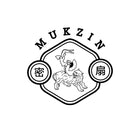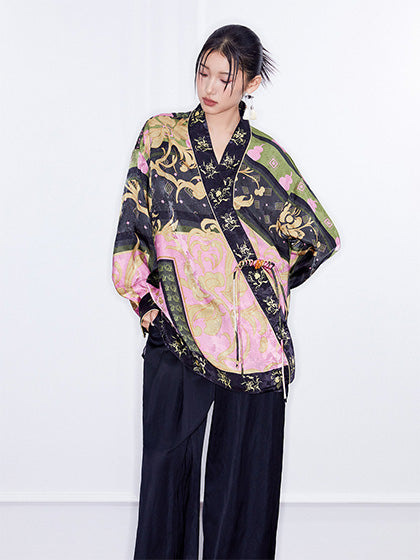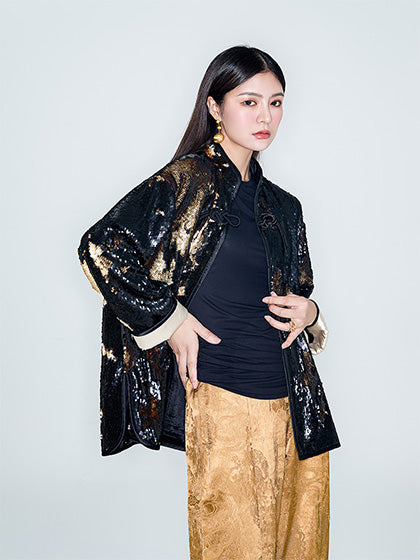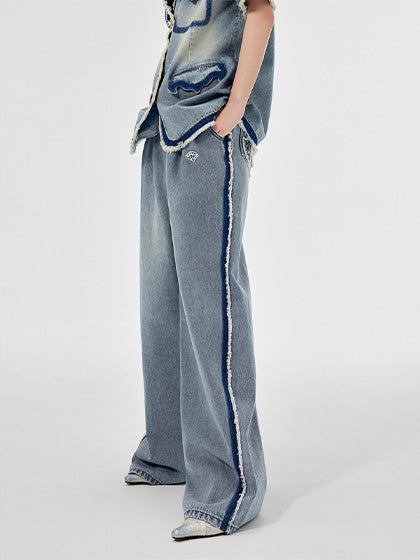Intangible Cultural Heritage: The Xinjiang Embroidery Project
MUKZIN’s designer Kate Han attended the trendy variety show “Hey Muse” with embroidery craftswomen from Hami, Xinjiang Province. Views of the program surpassed 100 million. Reposts of the show on social media platforms, such as Weibo, exceeded 10 million in one week. The popular media account “Ergeng” even made a documentary for this embroidery cooperation project and attracted over 3 million views through the internet.
The MUKZIN × Xinjiang embroidery project was highly praised by Minister of Culture Luo Shugang and Deputy Minister of Culture Xiang Zhaolun. In addition, MUKZIN was invited to attend the intangible cultural heritage design exhibition held at Prince Gong’s Mansion in Beijing. In November, Deputy Minister of Culture Xiang Zhaolun and Deputy Director of Zhejiang Provincial Agency of Cultural Affairs Huang Jianquan visited MUKZIN’s headquarters.
MUKZIN was invited by the Ministry of Culture to establish a “traditional craftsman workshop in Xinjiang.” MUKZIN reinterpreted the traditional embroidery techniques and totems with pioneering concepts and aesthetics and revitalized the little-known intangible cultural heritage, the “Xinjiang Embroidery” with the modern design.
Orders for handmade embroidery patches from MUKZIN helped local craftswomen win better social statuses, and earn as 12 times more as they used to.
Names of the craftswomen were embroidered onto the collar labels of the tailed costumes. In such a way, each customer can feel the humanitarian care behind every piece of costumes and can pay tribute to every guardian of traditional craftsmanship.
Xinjiang Hami embroidery often referred to as "Jiang Embroidery", is very popular in the Hami area of eastern Xinjiang. Since ancient times, Hami has been a major town on the Silk Road. It has been a fusion of Eastern and Western cultures.
In 1978, archaeologists discovered a lot of exquisite woolen clothing in the late Bronze Age tombs of 3,200 years history in Hami Fort. Among them, there is an embroidered piece, with a length of 58.5 cm, a width of 55 cm, colorful plaid pattern, a large triangular pattern composed of small triangles embroidered with yellow and blue on the red bottom. It has excellent craftsmanship, definitely the best of woollen fabric. It's also the earliest hair embroidery products in the age of domestic archaeological discoveries, and the earliest commercial silk embroidery objects discovered so far.
In 1699, Hami King invited artisans from Beijing to build the city and palace. All the officials and princess of Hami’s costumes were directly allocated by the Chinese Qing Dynasty government. Admiring the beauty of Su embroidery and Jing embroidery, the emperor invited dozens of embroidered workers to teach local women the embroidery skills
Therefore, Hami embroidery has become the "peony" in the traditional embroidery garden in Xinjiang
Jiang embroidery has a special pattern called Adrales Pattern, which is regarded as the Paisley Pattern of Oriental.






















